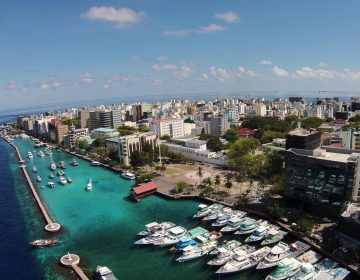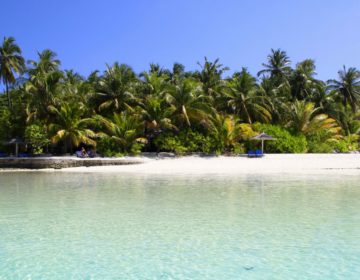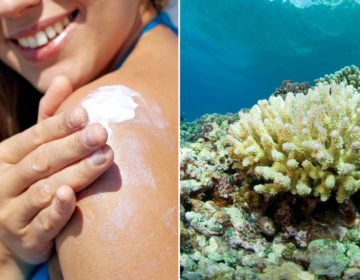The natural assumption upon hearing of the Fuvahmulah Cemetery would be that it is a cemetery in Fuvahmulah City, however, it exists on another island entirely.
The Fuvahmulah Cemetery, or ‘Molaki Kahbin’ in the local language, is located on Meedhoo Island in Addu City. Meedhoo is the closest piece of land to Fuvahmulah and has a close relationship with each other. Although the spoken dialect is different, the Meedhoo dialect is much closer to Fuvahmulah than they are to the other islands of western Addu. Unlike the words ending in the ‘a’ sound on the other islands, the Meedhoo dialect ends them in the ‘o’ sound, similar to that of Fuvahmulah.
 Photo credit: Two Thousand Isles
Photo credit: Two Thousand Isles
The elderly people in Meedhoo today say that it was the most frequently traveled island by the people of Fuvahmulah in the olden days. It was not the death of travelers from Fuvahmulah that created the Molokai Kahbin in Meedhoo, but an event that nearly left the island of Fuvahmulah uninhabited.
In a folklore depiction of the event, Fuvahmulah became uninhabited three times. The reason; a demon. According to the lore, most leave the island for Meedhoo to escape the demon and those who remain to die. On the third time the demon appeared, those who left Fuvahmulah died upon on arrival to Meedhoo and so, they were buried at the now famous Molakai Kahbin. The demon had stopped coming to the island because of its third ‘visit,’ an old woman who was cooking pushed a hot ladle into its face. The island repopulated and remained safe since.
 Photo credit: Two Thousand Isles
Photo credit: Two Thousand Isles
It is a recorded historical event that Fuvahmulah went through a period of abandonment. Contrary to the folklore, the cause was not a demon; but pestilence that caused the islanders to leave for Meedhoo. The third time Fuvahmulah was struck by plague was during the 18th century. When the Dhon Bandaarain won in rebellion against the invasion of Malabars of India, Fuvahmulah was suffering through a fever and diarrhea outbreak. After a large number of people died, the remaining population of Fuvahmulah moved to Meedhoo.

When the news of the migration came to the Maldivian capital, a scholar from Fuvahmulah, Munifaaku Mudhinkaleygefaanu was in Malé. He was the top shaman at the time and the appointed shaman of the state. When he heard of the news, his priority was to repopulate his native island. According to historians of Fuvahmulah, Mudhinkaleygefaanu traveled to Meedhoo and escorted Fuvahmulah’s original population back home, following a ritual.
 Meedhoo Island. Photo credit: Two Thousand Isles
Meedhoo Island. Photo credit: Two Thousand Isles
It is said that a couple of people reached Meedhoo alive on the boats that escaped Fuvahmulah due to pestilence. The lifeless bodies on vessels that beached at Meedhoo were all laid to rest at the spot now known as Molakai Kahbin – just north of Meedhoo’s Dhonruhva Cemetery. Molakai Kahbin is very difficult to recognize due to the growth of vegetation and palm trees, and very remnants of old gravestones. Regardless of its location or current state, Fuvahmulah Kahbin in Meedhoo is deeply rooted in Fuvahmulah’s history and is a site that needs historical preservation.
(Source: Maldive Islands, June 2018, Issue 06)



